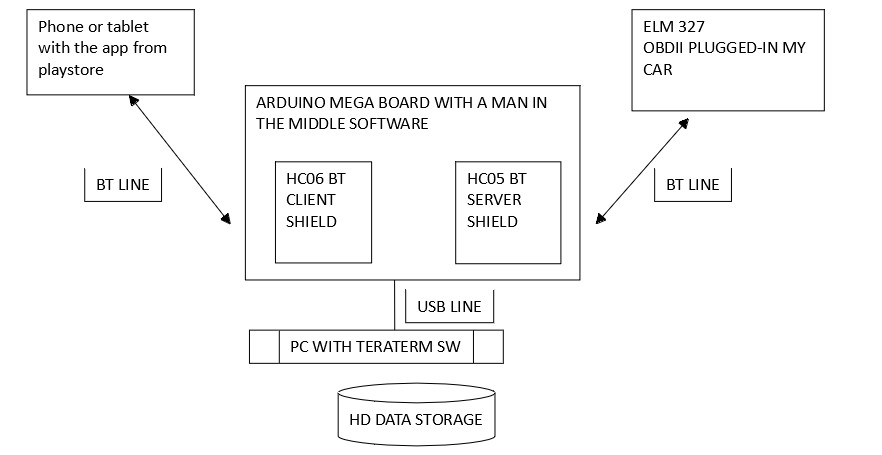The Can Bus Obd2 Elm327 interface is a powerful tool for accessing and interpreting data from your car’s Electronic Control Unit (ECU). This guide explores the fundamentals of connecting to your car’s ECU using an ELM327 device and a basic application built with MIT App Inventor 2. While comprehensive diagnostic apps exist, this example demonstrates the core principles of establishing communication and retrieving information via the CAN bus protocol.
Decoding the Car’s Language: Understanding the Process
This project utilizes a “man-in-the-middle” approach to decipher the communication between a car’s ECU and a diagnostic app. By intercepting the data exchange with a sniffer, the necessary commands for initiating diagnostic mode were identified and replicated in a custom application.
This setup involved an Arduino Mega acting as the sniffer, relaying information between the ELM327, a smartphone running a diagnostic app, and a PC for data logging. The logged data revealed the sequence of ASCII commands used for communication, providing the foundation for building a custom application. You won’t need to replicate this complex setup for general use; it was performed to understand the underlying communication protocol.
Building the Connection: Hardware and Software
The core hardware components include an ELM327 CAN to Bluetooth interface and a display device (e.g., tablet). The software utilizes MIT App Inventor 2 to create a basic application for sending and receiving commands.
The application relies on several clock components to manage different aspects of the communication process:
-
Clock1: Receives data from the ELM327, distinguishes between AT commands (modem commands) and CAN commands (diagnostic data), and displays the corresponding responses.
-
Clock2: Schedules the transmission of CAN commands to the ELM327 at a defined interval. This interval should be adjusted based on the car’s CAN bus speed (e.g., 250ms for 250 Kbps).
-
Clock3: Manages requests for Diagnostic Trouble Codes (DTCs) from the car’s ECU. This allows the ECU sufficient time to retrieve and prepare the DTCs for display. This functionality was tested in a simulated environment.
-
Clock4: Sends a sequence of AT commands to initialize the ELM327 and establish CAN communication with the car’s ECU. This clock disables itself after the initialization sequence is complete.
-
Clock5: A simple clock for displaying the current time.
Establishing Communication: Key Considerations
The application establishes communication with the ELM327 via Bluetooth. Commands are sent to the ELM327, and the application waits for a complete response, indicated by a “>” character. The CAN protocol used in this example is KWP at 250 Kbps, which may vary depending on the car model. The ELM327 can typically automatically detect the appropriate protocol.
The application interface includes buttons for manually sending individual commands and a “START” button to automate the initialization sequence. Displayed data includes throttle position, speed, RPM, and temperature. Custom seven-segment fonts were used for displaying numerical data.
Conclusion: Unlocking Your Car’s Data with CAN Bus OBD2 ELM327
This guide demonstrates the foundational principles of using a can bus obd2 elm327 interface to connect to a car’s ECU and retrieve diagnostic information. While this is a simplified example, it provides valuable insights into the underlying communication protocols and the process of building a basic diagnostic application. Remember to consult the ELM327 datasheet for a complete understanding of its capabilities and commands. Understanding these basics opens up a world of possibilities for monitoring and interacting with your vehicle’s systems.

